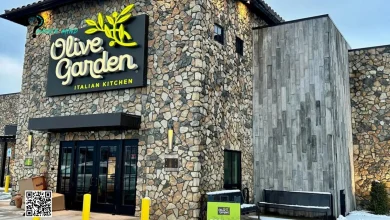Explore The Universe With GoodMoodDotCom.com: Your Ideal Adviser To Memorable Tours

Are you looking for incredible traveling guidance? Traveling has never been more convenient, but GoodMoodDotCom.com travel libraries are thrilling, and global in this era.
With a surplus of trip blogs, vlogs, and websites, it is comfortable to get encouraged for your next adventure.
This Travel Archive truly shines and delivers a valuable collection of experiences. If you are a dedicated tourist or scheduling your first trip, analyzing the libraries can deliver useful understanding and motivation for an unforgettable trip.
The particular content on this site is visually attractive, with spectacular photography and clear-to-read paragraphs that make browsing fun.
In this guide, we explore in-depth information on what makes goodmooddotcom.com travel sites exclusive, usage directions, travel classification, and tips.
Table of Contents
Understanding Of GoodMoodDotCom.com
Are you searching for traveling motivation? This tremendous traveling website is packed with precise travel handbooks, advice, and tales from real tourists.
Whether you are scheduling a new journey or just desiring your next adventure, this site provides you with complete data. Another justification why this site is popular is its priority on current news.
Travel movements and situations can change fast, so having the recent details is significant. This travel archive makes you confident you still have the most recent knowledge, so you can schedule your journeys with enthusiasm.
How To Use GoodMoodDotCom.com
Are you scheduling your new trip? Believe me, budgeting a trip is very difficult but this traveling site makes it manageable.
- The foremost step is to scan the site for handbooks on the countries you like to stay.
- The site’s search bar is very convenient, assisting you to discover the detailed news you require immediately.
- Travel Archives provides detailed advice on everything from where to hang around to what to eat. This works for you to produce a trip strategy that’s customized to your demands and curiosities.
- Lastly, don’t ignore to examine the directions from other tourists.
- These guidelines help you to evade ordinary travel blunders and make your journey even more delightful.
Comparison With Other Traveling Archives
| Competitors | GoodMoodDotCom.com | Lonely Planet Travel Guides | TripAdvisor Travel Forums | Fodor’s Travel Guides |
| Destination Coverage | Extensive global coverage | Vast global coverage | Broad global coverage | Extensive global coverage |
| Content Updates | Regularly updated | Daily updated | Updated frequently by the community | Updated periodically |
| Depth of Travel Guides | In-depth and comprehensive | Detailed but sometimes brief | Varies by contributor | Comprehensive and detailed |
| Interactive Elements | Quizzes, trip planners | Limited interactivity | Highly interactive, community-driven | Limited interactive features |
| Community Engagement | Comment and share options | Limited community interaction | Strong community engagement | Limited interaction |
Features Of GoodMoodDotCom.com
It is an inspired site, if you are searching for fun holiday places, or a couple searching for romantic breakouts, these libraries are customized for you. Here are some important features:
User-Friendly Chart Reading
Guiding through the travel library is an easy task. The site arranges articles into classifications, entitling users to discover detailed topics quickly.
No matter whether you are exploring economical travel ideas or extravagant holiday opinions, the user-friendly layout improves your search experiences.
Interesting Travel Tales
They provide multiple writings featured in the travel archives, and various articles are especially significant for their immersing portrayals and insightful content. Here is a some climax:
Trip To Italy
One article brings readers on a fascinating trip through Italy. This article underlines the dazzling topography and wealthy artistic inheritance.
Experience The Fun In Southeast Asia
The writer shares their understanding of scouring fussing markets, pure seasides, and historical churches.

This article is loaded with empirical direction on vehicle, nutrition, and regional traditions. To make sure all readers are well informed about their own Southeast Asian experience.
Tips For Exploring GoodMoodDotCom.com
To enhance your experience with this traveling website is all about learning how to use the assistance. Here are some useful tips to guide you through the travel libraries:
Connect With Other Tourists
This website motivates commitment among travelers. Always jot down comments or share your understanding of articles that motivate you.
Connecting with the community not only improves your awareness but also permits you to interact with fellow-minded tourists.
Use Check & Filter Options
When going deep into the travel libraries, take benefit of the questioning and filter markers. These features let you quickly discover articles that suit your travel curiosities, whether you are glimpsing for area guides or trip hacks.
Bookmark Your Most Liked Articles
As you analyze the articles, bookmark them this develops a customized collection of support that you can smoothly refer back to when scheduling your journeys. It’s a simple yet useful path to keep your favored tips and handbooks indexed.
Conclusion
In conclusion, GoodMoodDotCom.com, travel libraries are a priceless resource for everyone who wishes to explore the world.
With a wealth of articles wrapping various subjects, useful directions, and a society of fellow tourists, the library delivers everything you must to make your desired trip a reality.
So before you initiate your next journey, be confident to examine this travel library and get encouraged for your foreign trips. So step into this travel archive and discover the places that wait for you. Thank You!
For more information, visit Whatsmind.com




